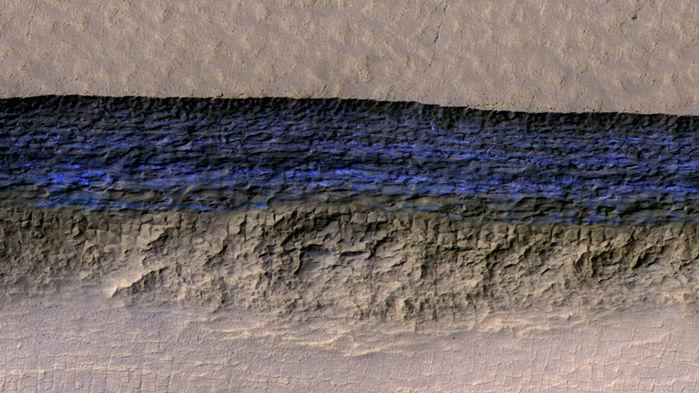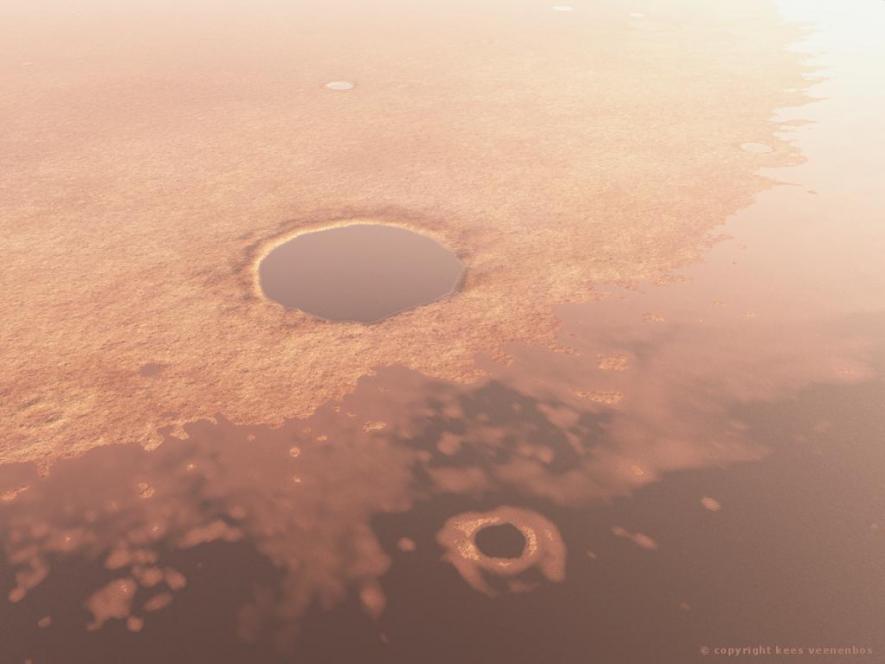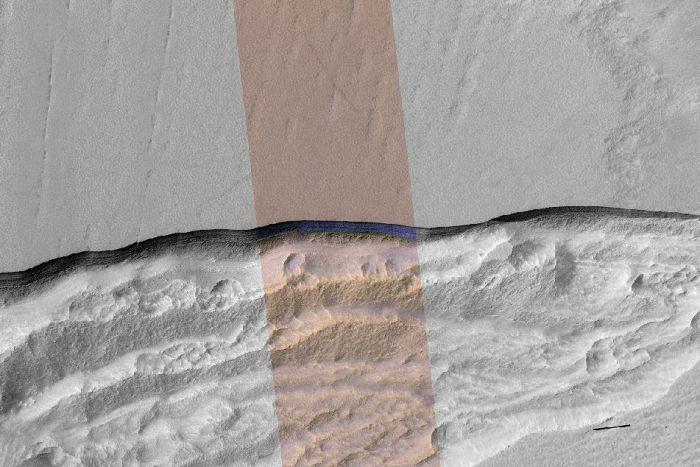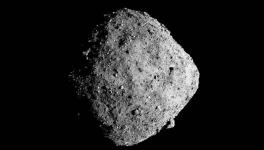Ice Cliffs Found on Mars

Credit: NASA/JPL/University of Arizona/USGS
Images from Mars Reconnaissance Orbiter (MRO) taken over a few years have now revealed cliffs made of nearly pure ice. These ice cliffs are buried slightly beneath the surface, around one or two metres below, and are estimated to be more than 100 metres thick.
At eight locations on the planet, erosion of Martian slopes exposed the thick ice underneath, which showed up in blue colour in high-resolution images. These ice cliffs, the researchers think, can act a source of water for future human exploration missions. They can also provide a record of the geological and climate history of Mars.
The erosion created cuts in the slopes called scarps. Of the eight locations analysed, seven are in the southern hemisphere, and the eighth is a “cluster of scarps in Milankovič Crater in the north”. The research team, led by Colin Dundas, a geologist at US Geological Survey, Arizona, looked at these regions for years before concluding that these are indeed thick sheets of ice beneath the surface and not seasonal frost.

Milankovič Crater, Credits: Space 4 Case
In their research article, the authors describe three strong pieces of evidence in their favour: firstly, the blue colour remains distinct from the surrounding terrain across time, even during summer, when seasonal frost has disappeared in high latitude slopes due to sublimation (evaporation of ice directly to gas, without reaching the intermediary liquid stage). Secondly, observations made by Mars Odyssey Thermal Emission Imaging System (THEMIS) show that the temperature of these blue scarps during late afternoons is higher than temperatures at which frost can form. Lastly, if it was frost, it would have been spread wider, but nearby pits do not show any blue colour.

Scarps exposing ice, Credits: NASA/JPL/University of Arizona/USGS
The observations also show signs that the scarps are retreating as the ice is sublimating. The researchers saw in images taken over a span of three years that in one of the locations, boulders were falling, contributing to the retreat. But the rate at which this is happening is very slow, probably only a few millimetres every year. At this rate, the researchers estimate that the current pits were formed over a scale of 10,00,000 years.
The ice in these cliffs is likely to have originated as repeated depositions of snow, which later transformed into massive ice sheets, the research says. These are now preserved under one to two metres of dust which is dry and has ice cemented into it. This is accessible ice, which has excited scientists of the possibility of human missions. The locations are not ideal, as these regions will be completely inhabitable during winters. But space scientists are hopeful that new ice deposits might be found in other places on the planet as well, perhaps closer to tropical areas.
Get the latest reports & analysis with people's perspective on Protests, movements & deep analytical videos, discussions of the current affairs in your Telegram app. Subscribe to NewsClick's Telegram channel & get Real-Time updates on stories, as they get published on our website.






















